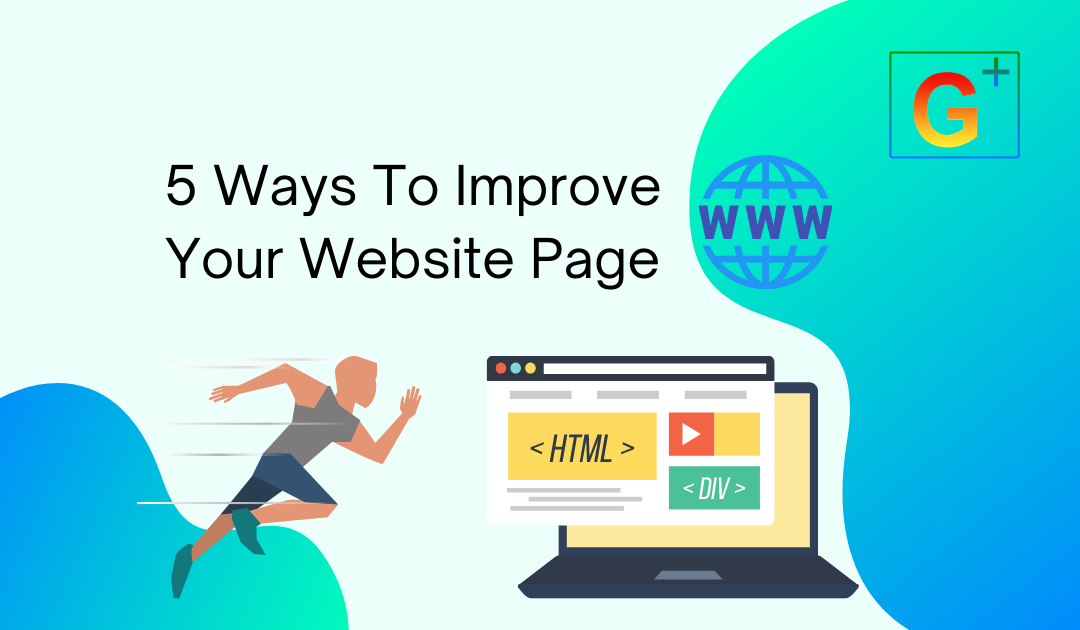Have you ever been frustrated with how long your website takes to load? Page speed is a significant factor when it comes to website optimization. If your website takes too long to load, visitors will get frustrated and leave. On the flip side, if your page loads quickly, visitors are more likely to stay on your site for more extended periods and convert into customers. Here are five ways you can increase the page speed of your website:
Optimize Images
The size of an image is a factor that can greatly impact the loading time for your site. Though there are many ways to optimize images, a straightforward way would be through lossy and/or lossless compression to reduce their file sizes while still maintaining quality. This will help speed up web page load times without sacrificing the look of the image. If your website is not loading fast enough, it’s likely because of the images. The HTTP Archive shows that, on average, 21% of a webpage’s weight comes from graphics and imagery alone! And ironically, this is one area where you can start to save some severe bytes and increase load time.
Benefits of Optimized Images
Speed can make all the difference. Your website visitors will feel more comfortable and stay longer, boosting your conversion rate for sales or leads. Plus, this helps increase SEO rankings! This means that you’ll see better ROI on any marketing campaigns in a shorter amount of time, not to mention less storage space needed (and cost).
Here’s the best WordPress plugin to optimize images:
- Optimole is the new plugin/tool by ThemeIsle. It’s a popular tool for making website design and development easier on WordPress sites. ● EWWW Image Optimizer does what its name suggests – compresses JPEG & PNG images that are uploaded in your WP Media library or database with just a few clicks of one button and without any fussing around with settings like quality level, etc.,
- Imagify (developed by the TinyPNG team) will optimize all GIFs / JPGS found inside posts.
- reSmush it from ShortPixel optimizes existing photos where image compression wasn’t optimal
- WP Smush from ShortPixel is a plugin that will automatically optimize uploaded images on the fly and reduce their file size by up to 80%
Use a CDN
A content delivery network, also known as a CDN, is an innovative technological solution for delivering your website’s data and files to all of its customers across the globe. Multiple servers are located in different geographical locations that store cached versions of webpages like HTML pages, javascript files, or CSS (content style sheet) file formats. These can be accessed by any visitor through our nearest server, along with images and videos on YouTube-like streaming services. Without much lag time between loading screens, two other main benefits would be: increased speed translates into better user experience and reduced bandwidth costs due to less load on each host machine within this system.
Best CDN to Increase Page Speed
- Max CDN/Stackpath
- Sucuri
- Cloudflare
- KeyCDN
- Rackspace
- Google Cloud CDN
- Cachefly
After comparing all of the top CDN providers to speed up your website, it’s clear that MaxCDN has a robust set of features and reasonable pricing. They have a beginner-friendly setup with web filters for malware protection and analytics tools like Google Analytics integration so you can track how much traffic is coming from different countries or where viewers are clicking on links most often. StackPath and Sucuri are two of the most secure CDN providers today. With Cloudflare’s free option, you can get a taste of what it is like to use this service without having to spend any money upfront.
Minimize Excess Code
When optimizing your code, you should remove any unnecessary characters. This includes spaces and commas that are unnecessary to break up the flow of sentences, formatting (e.g., <br> tags), or unused bits of code. Google recommends using CSSNano and UglifyJS for their optimization tools to improve page speed significantly!
Reduce Redirects
Have you ever noticed that a page loads faster the fewer redirects there are? HTTP request-response cycles take time. For example, if your mobile site looks like this: “example.com -> www.example.com -> m.example/m,” with two additional requests and three total responses in contrast to one or zero response, it is going to be slower for your visitor as they wait around on each cycle!
Leverage Browser Cache
Browsers cache a lot of information (stylesheets, images, JavaScript files) so that when visitors come back, they won’t have to wait long for the browser to reload. Use tools like YSlow to see if you already set your expiration date and then change it accordingly. In some cases, just one year is enough time since most sites don’t update their designs too often.
Use Reliable and Fast Web Hosting
Ensure that your hosting provider caters to the needs of your online customers by investing in a high-performance server. Free web hosting, inadequate hosting services with minimal or no support, and shared resources all contribute to slower servers which are detrimental to customer satisfaction and speed.
Keep WordPress Light
WordPress has a variety of themes and plugins that allow you to create beautiful websites quickly. With so many options, it can be tempting to overload your site with too much customization or use heavy features like JavaScript animations. However, adding extra elements will slow down the time for loading pages on your website because they are forced to stream large amounts of data. To solve this problem, remove any unused plugins from WordPress by logging in at ‘Plugins,’ ‘Installed Plugins.’ Next, examine which plugin is slowing the webpage’s response rate by opening up page monitoring software such as Pingdom Tools (www.pingdomtools). From there, delete unnecessary scripts and deactivate ones that require higher levels of CPU power”.
Conclusion
Your customers are impatient. They want to find the information they need quickly and be on their way, so your website speed needs to reflect this. We hope you’ve found our tips helpful and that you use them to improve your website speed. Whatever the case is, if you can make sure that visitors stay on your site longer (rather than bounce) by enhancing their experience with increased load times, then you’re going to have better SEO rankings. Google takes note of how fast websites load and ranks them accordingly. Having a fast-loading site is not optional in 2021. It’s a necessity.

